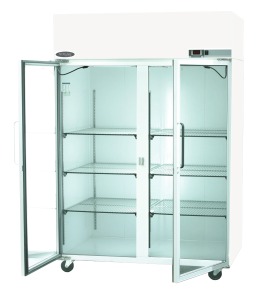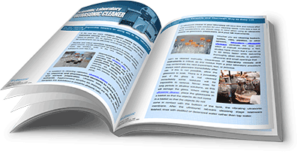Understanding Temperature Cycling

Setting and maintaining precise temperatures in lab refrigerators and lab freezers is crucial if your research or manufacturing facility subscribes to cGLP and cGMP. Costly pharmaceuticals and vaccines can quickly be compromised if laboratory refrigerators and laboratory freezers are not carefully monitored. A key area of concern is temperature cycling during defrosting cycles in these storage units and how this must be accommodated by established standard operating procedures in your facility.
Defrosting Described
Defrosting by definition indicates a temperature fluctuation, whether in a lab freezer or lab refrigerator. Defrosting cycles can be manual (manual defrost) or automatic (auto-defrost).
A manual defrost freezer functions by circulating refrigerant in the walls of the unit. Products stored next to the walls will likely be colder than products stored toward the middle. This temperature gradient should be taken into account in your standard operating procedures. Because ice will build up on the walls, the freezer must be shut off periodically (such as once every 1-2 weeks) to remove the ice. Otherwise it will have poor cooling. Labs with manual defrost freezers must have a backup freezer to receive the contents while the primary unit is defrosted.
An auto-defrost freezer
A manual defrost refrigerator, like a manual defrost freezer, circulates the refrigerant in the walls of the unit. It also has internal temperature gradients. The most common maintenance issue with a manual defrost refrigerator is condensate water pooling at the bottom of the cabinet. Consider the need for a backup refrigerator for product protection during the defrosting operation.
An auto-defrost refrigerator, unlike the auto-defrost freezer, does not have a heater. It uses fans that stay on continuously blowing air at the condenser coils to prevent icing. The fans also provide a more uniform temperature distribution than found in a manual defrost unit. While there is a certain convenience to auto-defrost lab refrigerators some users are concerned about the possibility of contents drying out from the blowing air.
Managing Auto-Defrost Cycles
By definition, manual defrosting is under the full control of lab personnel. Auto-defrost lab refrigerators and lab freezers such as the Nor-Lake Scientific Premier models available from Tovatech are programmed to auto-defrost after a specific number of hours of compressor operation. But they do provide user-controlled auto-defrosting allowing lab personnel to define the frequency and duration of the defrosting operation. This is accomplished by microprocessor temperature controls that
- enable personnel to set temperature parameters
- display the internal temperature
- provide audible and visual hi/lo alarms
- allow lab technicians to adjust the defrost interval so that the energy-intensive defrost occurs only when actually needed
The latter point contrasts with defrosting after a specific number of hours of compressor operation. The controller can be programmed with defrost cycle duration and frequency.
While practices will vary from lab to lab, refrigerator defrosting should typically occur every 6-8 hours for frequently used units or once in 24 hours for units not in use. The cycle duration is about 15 minutes. A clue to defrost frequency is the compressor. If it is not running constantly defrost cycles can be extended or even turned off to minimize temperature fluctuation and save energy. The fans continue to blow and the compressor continues to cycle to keep temperatures constant.
Defrosting cycles in auto-defrost freezers are typically every 4 to 6 hours and last for 30 minutes. You can extend auto-defrost cycle time (you can never shut it off) providing extreme care is taken to avoid condenser icing. This will shut down the unit with potentially costly consequences
In summary, while careful consideration should be given to choosing between manual and auto-defrost lab freezers or lab refrigerators, even more care should be given to establishing and following standard operating procedures to fully protect the contents of these units from possible damage due to temperature fluctuations. The scientists at Tovatech are experts in this field and will provide professional guidance on equipment selection and operation.
————–
What types of laboratory freezers or refrigerators are used in your facility? What procedures are in place to guide defrosting cycles?
